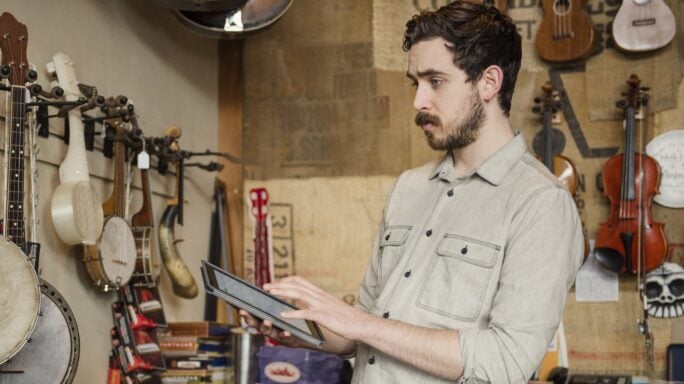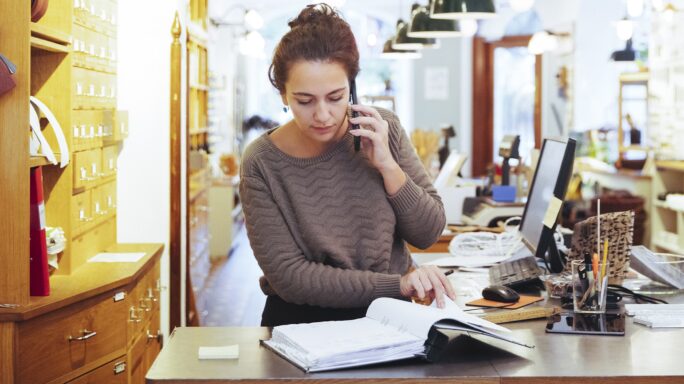Money Matters
What is payment on account and how do I pay it?
Payment on account for Self Assessment can be confusing. In this article, we break it down so you can make tax payments with confidence and ease.

If you’re a small business owner submitting Self Assessment tax returns and are not sure how payment on account works, then paying your tax bill will naturally feel confusing.
Unfortunately it catches many new (and established) business owners out, and can lead to people paying more than they need to in interest and late payment penalties because they don’t have enough money set aside to pay their tax bill.
So we want to clear up any questions you have about paying your Self Assessment tax. This way, you’ll never again be surprised by when and how much you need to pay.
In this article, we break down the meaning of a payment on account — exactly what it is and how it works, whether or not you are required to pay on account, and when you need to make your tax payments.
Here’s what we cover:
- What are tax payments on account?
- An example of how payment on account works
- How and when to make tax payments on account
- How to reduce payments on account
- How does a payment on account refund work?
- Final thoughts on payment on account
What are tax payments on account?
Payments on account are advance payments you make twice a year towards your Self Assessment tax bill.
HMRC estimate how much tax you owe for the upcoming year based on your previous year’s tax bill. You pay this estimate over two instalment dates for the purpose of spreading out your tax payments throughout the year.
HMRC designed this process to help taxpayers stay on top of their payments as well as avoid paying tax in arrears.
You can calculate your upcoming payment on account by halving your previous year’s tax bill. Your actual tax bill won’t necessarily match the estimate, as business income generally fluctuates from year to year.
So If your payments on account don’t cover your total tax bill for the year, you must make an additional ‘balancing payment’.
The two deadlines for paying your Self Assessment tax are:
- Midnight on 31 January (the same date your Self Assessment tax return is due) for any tax you owe for the previous tax year (a balancing payment) and your first payment on account for the upcoming tax year.
- Midnight 31 July for your second payment on account for the upcoming tax year.
As a Self Assessment taxpayer, you’re required to make payments on account to HMRC unless you fall under one of the following two categories:
- Your last Self Assessment tax bill was less than £1,000.
- 80% or more of your tax was deducted at source through PAYE.
An example of how payment on account works
To give you an illustrative payment on account example, let’s say you became self-employed in May 2020 and completed your first Self Assessment return for the 2020/21 tax year.
Once you completed your return, HMRC calculated you owed £500 tax for the year, due by 31 January 2022. Your tax bill was under the £1,000 threshold, so you weren’t required to make payments on account for the following tax year.
During the following tax year (2021/22), you recorded higher profits and your bill for the 2021/22 tax year came to £2,000.
Because this is above the threshold, the payment on account process was triggered for the 2022/23 tax year.
Therefore, in addition to the £2,000 tax payment owed for the 2021/22 tax year, your tax bill also included your first payment on account for the 2022/23 tax year of £1,000 (half your 2021/22 tax bill).
So you paid a total of £3,000 on 31 January 2023.
Your second payment on account of £1,000 for the 2022/23 tax year was made on 31 July 2023.
Now, in total, you have paid £2,000 towards your 2022/23 tax bill.
When you submit your Self Assessment tax return for the 2022/23 year, and your tax bill comes to £1,800, for example, you’ll be owed a refund of £200 (the difference between the £2,000 you have paid on account and your actual tax bill).
In this case, your next payment on account for the following tax year, due 31 January 2024, would be £900 (half of your 2022/23 tax bill).
Read more on Self Assessment:
- Free e-book: Get Self Assessment right each time
- Tax deductions UK: Allowable expenses you can claim if you’re self-employed
- How to file a Self Assessment tax return online: A step-by-step guide
How and when to make tax payments on account
There are a few ways you can pay, just make sure you allow enough time for the payment to be processed before the deadline.
For same or next day payment choose either online banking, CHAPS, pay online with a personal debit card or corporate credit card (personal credit cards are not taken), or pay at your bank (you’ll need a paying-in slip from HMRC to do this).
Allow three working days if you choose to pay by Bacs or cheque through the post.
A convenient way to ensure you don’t miss your payment on account is to set up a direct debit with HMRC. By sending this form to your bank, you approve HMRC to collect however much you owe from your account. It will tell you in advance how much it will take and when.
Allow five working days to process a direct debit the first time you set one up.
If you prefer to make regular monthly or weekly payments towards your next tax bill, you can set up a Budget Payment Plan. How much you want to pay and how often is up to you.
The amount you have paid into your Budget Payment Plan will be used against your next tax bill, meaning you won’t be left with a large balance to pay at the deadline.
If the amount in your plan doesn’t cover your tax in full, you’ll need to pay the difference.
If you miss a payment deadline, you’ll be charged interest, and you may also have to pay a late payment penalty.
How to reduce payments on account
All business income can fluctuate from year to year.
If you know your tax bill is going to be lower than the previous year, say for example you have fewer clients or your tax relief has gone up, you can avoid overpaying tax by asking HMRC to reduce your payments on account.
You can choose to do this online or by post.
To do this online, sign into your online account. Select the option to view your latest Self Assessment return, and then select ‘reduce payments on account’.
To apply by post, fill out the SA303 form on screen, print it, and send to the tax office.
Do think carefully before you reduce your payment on account because if it turns out you’ve underpaid, you’ll have to pay interest on the outstanding amount, which can increase your tax bill significantly.
How does a payment on account refund work?
If you have paid too much tax, you’re entitled to claim a payment on account refund.
As a Self Assessment taxpayer, you claim a refund through the Self Assessment process. This means any overpayments will be processed once you’ve submitted your next tax return.
Once HMRC has received your return, you’ll be told if you have overpaid.
You’ll be able to then choose how you want the money to be paid back to you, for example, by cheque or bank transfer. Alternatively, you can put it towards your next payment on account tax bill.
Final thoughts on payment on account
Now you understand how HMRC calculates payment on account, you should find it easier to anticipate your next tax bill.
For further support with this, an accountant will be able to help you, if you have one.
But, as always, it’s best practice to submit your Self Assessment tax return as soon as possible post tax year-end to give yourself enough breathing room to settle a balancing payment without incurring interest and late payment penalties.
Editor’s note: This article was first published in January 2023 and has been updated for relevance.








Ask the author a question or share your advice